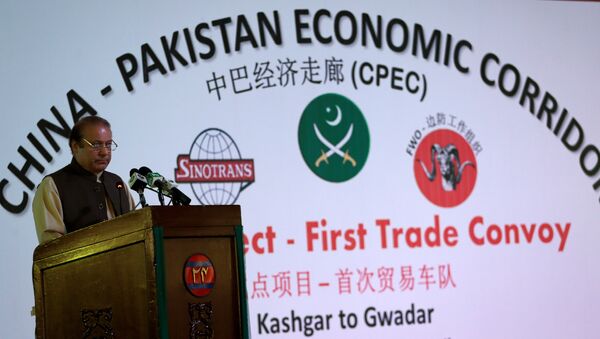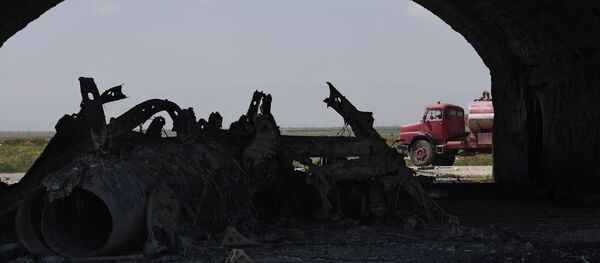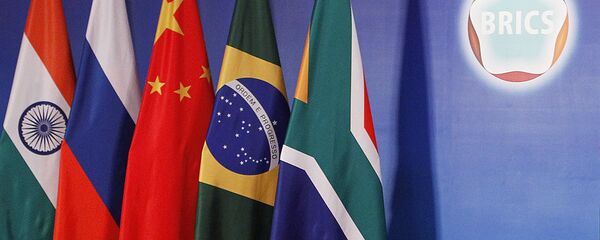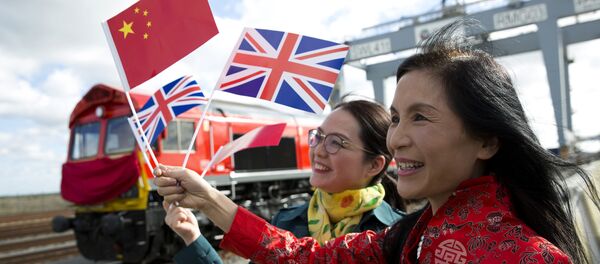The development of alternative governance systems such as BRICS, the Shanghai Cooperation Organization (SCO), and the Asian Infrastructure Investment Bank (AIIB) are central to the multipolar initiatives to reform the world system, but what's needed most of all is to integrate the Afro-Eurasian countries of the Eastern Hemisphere into a win-win network of real-sector economic relations. China's solution to this pressing need is its One Belt, One Road (OBOR) global vision of New Silk Road connectivity which aims to construct a series of multipolar transnational connective infrastructure projects designed to do just that.
CPEC Connectivity
While China is indeed streamlining other mainland corridors across Eurasia and plans to outfit them with high-speed rail technology, they each run the risk of being disrupted, controlled, or influenced by the externally provoked identity-driven conflicts of Hybrid Wars. The same can be said for CPEC, too, but it's much easier to manage these disturbances in the two transit states of China and Pakistan than it is to do so all across the Eurasian landmass. This makes CPEC the most solid and dependable New Silk Road investment from a security standpoint, which is doubly understandable if one acknowledges the geostrategic seriousness of this project.
Accepting that CPEC holds the realistic possibility of connecting Europe, the Arab countries, and Africa with their SCO counterparts, then it's foreseeable that a Convergence of Civilizations will take place on Pakistani territory which could consequently counter the divide-and-rule blueprint of a "Clash of Civilizations."
Cognizant of the irreplaceable significance of the Indian Ocean and appreciating the dual roles that CPEC is poised to play as the Zipper of Eurasia and Convergence of Civilizations, it’s reasonable to assert that the present century is an Indo-Pacific one and that Pakistan sits right in the middle of the most influential global processes.
How It Works
To succinctly explain, the expansion of transport connectivity generally equates to an improvement in economic relations between all related parties which come to employ the said route, which thereby justifies the Zipper of Eurasia paradigm.
Concerning the Convergence of Civilizations, any company could be interested in relocating their production facilities to Pakistan in order to achieve equidistance between their pan-Eastern Hemispheric suppliers and consumers, as well as to cut down on related transport and labor costs.
Manufacturing, assembly, or sales outposts in South Asia could make it much easier to balance commercial connectivity between Western Europe
CPEC is also importantly located midway between the booming East African marketplace and China's East Asian manufacturing coast, so it can additionally be utilized by either of these sides or interested third-party partners to facilitate trade between this emerging economic axis.
Altogether, the crisscrossing trade networks in the Indian Ocean and CPEC's central location in enabling all of this adds credence to the argument that the world is moving towards an Indo-Pacific Century which will see South Asia become the focal point of global geopolitics and economic competition.
Broadening the BRICS
Having acquired familiarity with the driving logic behind CPEC and its salience to the New Cold War, it's now time to introduce the reader to how this game-changing project is slated to contribute to the bolstering of the BRICS bloc and the consequent promotion of the emerging Multipolar World Order.
This immediately drew the ire of India, which has been steadfastly opposed to CPEC on the grounds that it allegedly violates New Delhi's maximalist claims to Kashmir. I comprehensively explored the various nuances involved with this in an article that I published for the Islamabad-based Regional Rapport analytical outlet titled "India's Freaking Out Over China's 'BRICS-Plus' Proposal," and I suggest that any curious readers reference it if they'd like to learn more about this important issue. The topic of India's resistance to this project isn't the focus of the given article, nor is its rapidly developing military-strategic partnership with the US which might be playing a guiding role in these said calculations, so I'll move along and continue to discuss the positive aspects related to CPEC instead.
Either way, China and its multitude of partners won't be dissuaded from continuing their breakneck progress on OBOR just because two spoilsports are against this series of initiatives, and there's a strong likelihood that Beijing will make the New Silk Road and BRICS+ concepts the tangible manifestations of the four themes that the People's Republic plans to promote during the 9th BRICS Summit which it will host this September. Accordingly, there's no escaping the fact that CPEC is primed to steal the show in such a scenario due to its previously explained geostrategic significance, so it's fair to state that this New Silk Road project will form the inseparable spine of BRICS+ and thenceforth the future of the multipolar world.
In every which way, the future of the multipolar world depends on CPEC, and given the strong global support that this initiative is receiving, it's safe to say that the future lies in good hands.
The views expressed in this article are solely those of the author and do not necessarily reflect the official position of Sputnik.










